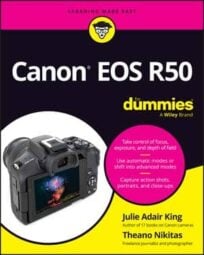You can print out this guide and tuck it in your camera bag, or you can bookmark this page in the browser of your smartphone. Either way, you're getting a head start on taking great photographs!
Controls on your Canon EOS R50
If you’re not familiar with the R50 camera, here’s a quick guide to its buttons, dials, and other external controls. The lens shown here is the 18-45mm kit lens; other lenses may have different features.
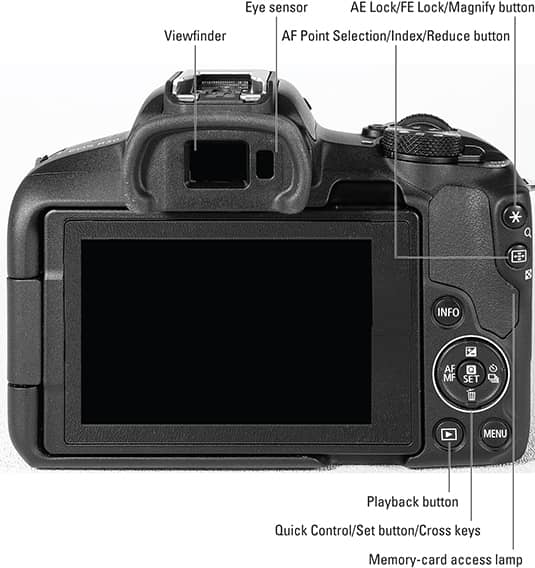
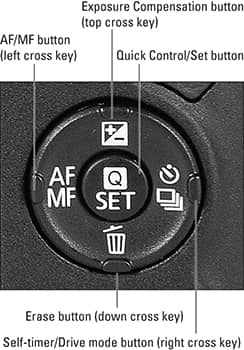
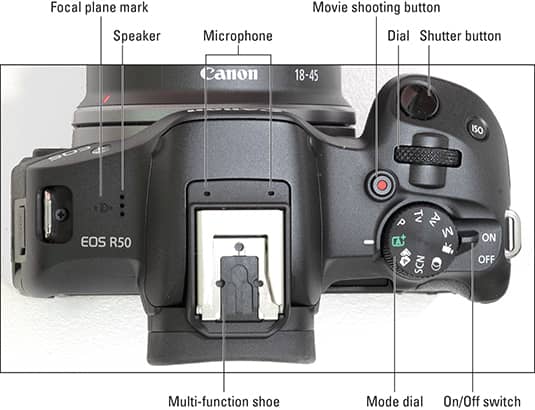

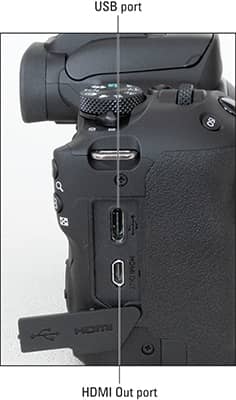
Shooting modes on the EOS R50
Your choice of shooting mode determines how much control you have over picture settings, including options that affect exposure, color, and autofocusing features.
Set the exposure mode via the Mode dial shown here. For the most control when shooting photos, switch to P, Tv, Av, or M mode. Canon refers to those modes as Creative Zone modes; the others are Basic Zone modes.
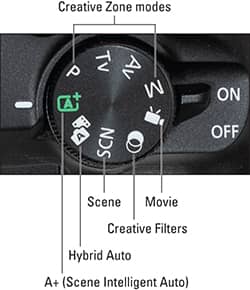
| Shooting Mode | Description |
| A+ (Scene Intelligent Auto) | Completely automatic photography; the camera analyzes the scene and tries to choose settings that produce the best results. |
| SCN (Scene) | Automatic modes for capturing specific types of scenes, including portraits, landscapes, and nighttime shots. |
| Creative Filters | Adds special effects to pictures and movies as you shoot them. |
| Hybrid Auto | Creates a video digest featuring photos taken in this mode. |
| P (Programmed Autoexposure) | Camera selects both the f-stop and shutter speed to ensure proper exposure, but you can choose from multiple combinations of the two settings. |
| Tv (Shutter-priority Autoexposure) | You set shutter speed, and the camera selects the f-stop that will produce a good exposure. |
| Av (Aperture-priority Autoexposure) | You select f-stop, and the camera selects the shutter speed that will produce a good exposure. |
| M (Manual Exposure) | You control both the shutter speed and f-stop. |
| Movie | Switches the camera from still photography to video-recording mode. |
Button functions and other controls
It’s great to have a map to the buttons and controls on your camera, but it’s not a lot of help if you can’t remember which button to press when (and why). So here’s a quick recap of what you can do with each button. Note: This information concentrates on features available when you shoot in the P, Tv, Av, and M modes. A few features also work in other modes.
| This control | Performs these functions |
| Mode dial | Sets the shooting mode, which determines how much control you have over picture settings. For the most control, choose P, Tv, Av, or M. |
| Menu button | Press to display and hide camera menus. |
| Info button | Press to cycle through shooting and playback displays, each of which presents different shooting and file data. |
| Movie record button | When the camera is in Movie mode, press to start and stop recording. |
| Q/Set button | Press to choose selected settings or to shift to Quick Control mode, which provides fast access to shooting and playback settings. |
| Cross keys | Press the left, right, top, and bottom buttons that surround the Q/Set button to access the following settings: top button, Exposure Compensation; right button, Drive mode; botttom button, Erase; left button, Focus Mode (auto or manual focusing). |
| ISO button | Press to display a screen where you can adjust the ISO setting, which determines how sensitive the camera is to light. |
| AE Lock/FE Lock/Magnify button | During shooting, press to lock autoexposure (AE) or to lock flash exposure (FE). When focusing, press to magnify the display. During playback, press to magnify the current image. |
| AF Point Selection/Index/Reduce | During shooting, press to display the AF Area mode settings. In Playback mode, press to switch from single-image view to Index (thumbnails) view. If the image is magnified, press to reduce the magnification level. |
| Erase button | While reviewing pictures, press to erase currently displayed or selected photos. |
| Playback button | Toggles picture playback on and off. |
| Lens-release button | Press to disengage the lens from the camera’s lens mount so that you can remove the lens. |

